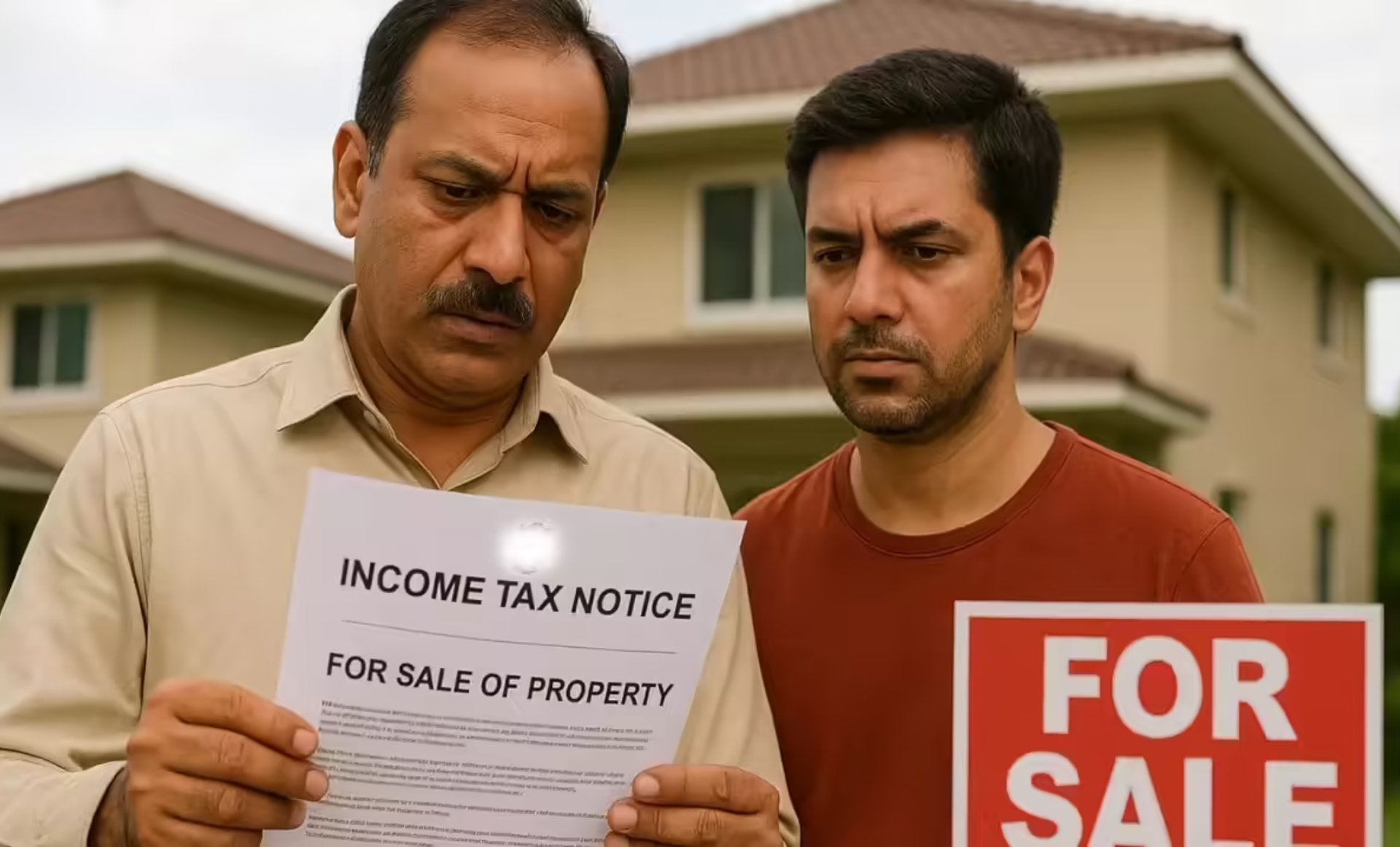TDS Error on Ancestral Property Sale: ITAT’s Landmark Ruling 2025 & What Every Real-Estate Investor Must Know
Learn how a technical TDS mismatch on the joint sale of ancestral land led to a tax notice — and how ITAT’s ruling turned the tables, offering crucial lessons for property sellers and real-estate investors.
The Fortune Realty Group
10/27/20253 min read

TDS Error on Ancestral Property Sale: ITAT’s Landmark Ruling 2025 & What Every Real-Estate Investor Must Know
Learn how a technical TDS mismatch on the joint sale of ancestral land led to a tax notice — and how ITAT’s ruling turned the tables, offering crucial lessons for property sellers and real-estate investors.
Table of Contents
A father and son jointly sold ancestral land for ₹13 crore, each receiving ₹6.5 crore. The buyer deducted the entire TDS (tax deducted at source) of ₹13 lakh under only the father’s PAN instead of splitting it between father and son.
The father filed his ITR under Section 139(4) declaring his share of capital gains, and the son declared his share separately without claiming any TDS credit. However, during processing, the tax department allowed only the proportional TDS credit of ₹6.5 lakh for the father, triggering a demand for additional tax and interest.
Case Overview: What Happened
The ITAT-Pune (“ITA No.722/PUN/2025”) ruled on 22 September 2025 that the father was entitled to full credit of the TDS of ₹13 lakh. The tribunal held that:
Even if the deductor credited the entire TDS under one PAN mistakenly, the deductee who fulfilled tax liability cannot be disadvantaged.
The principle under Section 199 of the Income Tax Act, 1961 read with Rule 37BA applies: If TDS is deposited into government account under one PAN and tax liability is clear, the credit must be granted.
“The Revenue cannot enrich itself at the cost of the assessee,” said the bench.
ITAT’s Verdict: Key Legal Takeaways
Joint ownership, sale & TDS risk: In property deals involving joint ownership (father-son, siblings, co-owners), investors must ensure that TDS deduction reflects ownership proportions. Failing this causes mismatch between Form 26AS and ITR, leading to notices.
Correct reporting of capital gains: Sale of ancestral property triggers capital gains tax (long-term or short-term depending on time held). Accurate split of consideration and gains between co-owners is critical.
TDS vs credit mismatch: Even if the seller declares the correct share, if TDS credit is incorrectly credited under another PAN, it may trigger scrutiny or demands — as this case illustrates.
Legal compliance protects value: For buyers/investors in flats, plots, farmland or joint holdings, this ruling reinforces the importance of full documentation, correct PAN usage, proper credit flow and timely filings.
Why It Matters for Real-Estate Investors & Property Sellers
When purchasing or selling jointly-held property, ensure the deductor records correct PAN(s), ownership split and proportionate TDS.
Before filing ITR, cross-verify Form 26AS and sale consideration split, and ensure TDS credit matches your share.
In estate planning, co-ownership or HUF holdings of ancestral land demand clear allocation of gains and documentation.
Maintain paperwork: sale deed, joint owners’ share agreement, capital-gains calculation, TDS certificates.
Consult tax/legal advisors when sale involves ancestral property, joint owners, large capital gains or TDS deductions, especially in real-estate investments (flats, plots, farmland).
Actionable Steps for Property Investors & Buyers
This ruling will strengthen investor confidence in joint property holdings and pave the way for smoother compliance in high-value real-estate transactions — including investment-ready flats in Delhi-NCR, farmland near growth corridors and developer launches with multi-owner structures.
Given how many properties in Delhi/NCR involve family-held or ancestral land being converted or sold, this precedent helps align real-estate deals with tax-law clarity.
Why This Ruling Signals a Shift for Real-Estate Market
Why Farmhouses Are the New Wealth-Play: How India’s Rich Buy Farmland & Legacy Plots in 2025 — Insights into land investment and legacy assets.
Prestige Group Launches 620 Homes in Ghaziabad Worth ₹2,200 Cr: What This Means for Delhi-NCR Property Investors — Understand large-scale residential launches and their investment implications.
Gurugram Crackdown on 11 Illegal Colonies: What This Means for Property Buyers in NCR — Regulatory risks and how that impacts property buying in NCR.
Related Reads to Explore
Explore Other Prime Real Estate Opportunities in NCR
There are several verified and ready-to-move flats available in the region. At The Fortune Realty Group, we provide expert guidance and curated listings to help you find the perfect property.
You can explore:
Flats in Chattarpur & Vasant Kunj – Affordable options with excellent metro connectivity.
Farmland in Manesar – Ideal for investment and weekend retreats.
At The Fortune Realty Group, we help you find:
✅ Verified luxury builder floors with clear registry
✅ Prime locations like Gurugram, Manesar, Chattarpur, Vasant Kunj, Vasant Vihar, and more emerging hotspots
✅ Full support with home loans, legal formalities, and after-sales services
✅ Zero brokerage deals — so your investment goes directly into your dream home, not middlemen
With booming infrastructure, excellent connectivity, and rising demand, Gurugram, Manesar, Chattarpur, Vasant Kunj, and Vasant Vihar have become top choices in Delhi NCR for luxury living and high-return real estate investments.


Verified luxury builder floors with clear registry
How TFRG Makes Luxury Buying Stress-Free

Looking to Invest in South Delhi or Manesar?
Contact TFRG today for verified listings, legal due diligence, and best-in-class guidance across residential, commercial, and plotted developments.
The Fortune Realty Group
Experience hassle-free property deals with zero brokerage.
Contact Us
Inquiry
support@thefortunerealtygroup.com
+91-9990990317
© 2025. All rights reserved. Designed by PC Media House.
